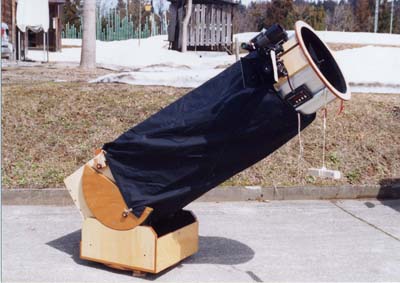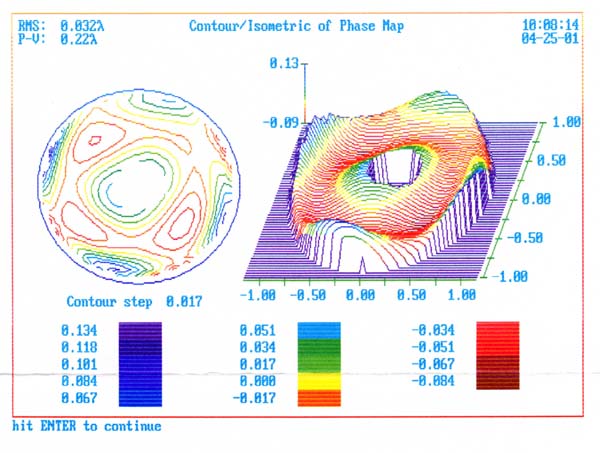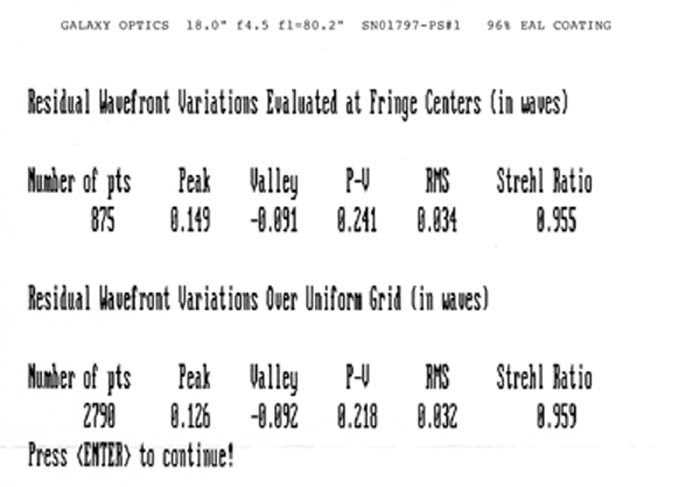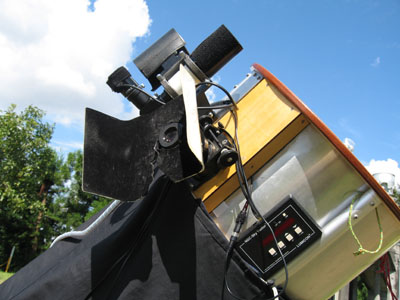 Present secondary cage: Updated March, 2008 |
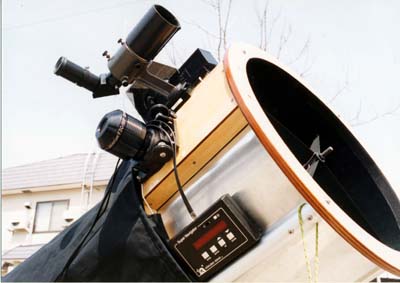 Initial secondary cage |
Left: Enlarged view of the secondary cage.
A piggyback ride Regal Quick-Finder on a 50 mm right erect finder, and a computer for digital setting circles. The eyepiece, I usually use for comet hunting, is manufactured in Germany with focal length of 30 mm, and 88 degrees apparent field of view. It means 68x with 1.3 degrees actual field of view. Kendrick Dew Remover System is installed for the eyepiece, the secondary mirror, and the eyepiece of the 50 mm finder. The dew shield is placed on the Quick-Finder and the objective of the 50 mm finder. You cannot enjoy comet hunting without measures for dew or frost in most part of Japan.
Right: Initial secondary cage without dew remover. Telrad finder was equipped. The light shield for eyepiece is removed in this photo.
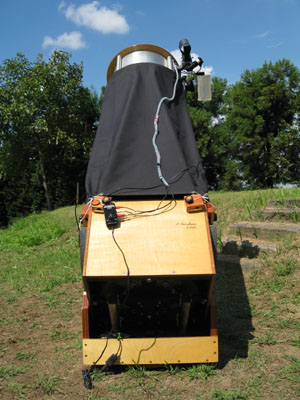 Updated March, 2008 |
 Updated March, 2008 |
Right: A tailor made telescope cover. A dealer of plastic sheet in my town made it with a low price. I use the cover while I have a nap in my car in between the comet hunting sessions.
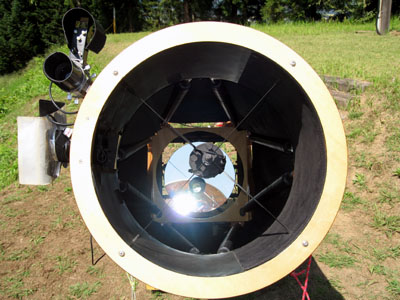 Updated March, 2008 |
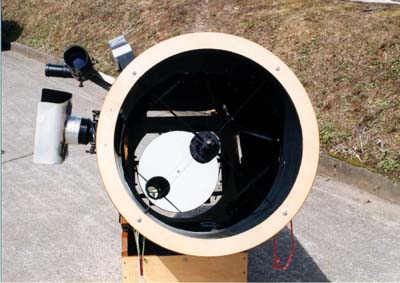 |

Rear view of a mirror cell.
A cooling fan is operating. Two vertical wood blocks are to protect three light collimation knobs, when the mirror box is placed on the ground.
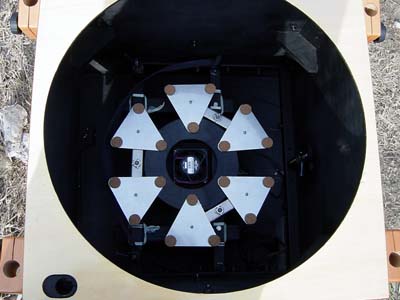 |
A primary mirror and trusses are removed.
Top of this page
Assembling
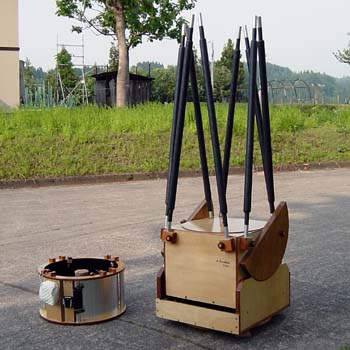 |
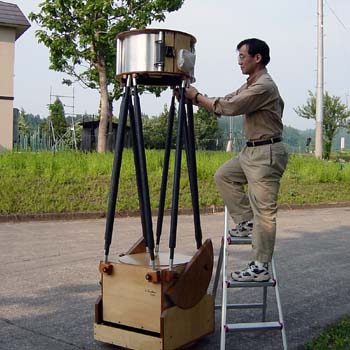 |
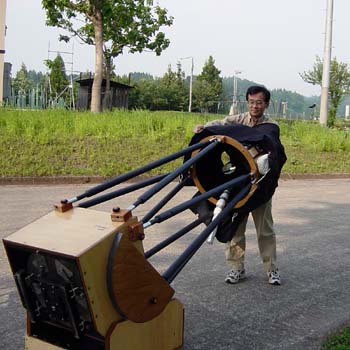 |
Center: Connecting truss poles and the secondary cage.
Right: Pulling on the light shroud. White counter weight, which is metal chain covered with white foam, is in the secondary cage. At this stage, it is bottom heavy. It is removed after the finders and other gears are installed on the secondary cage.
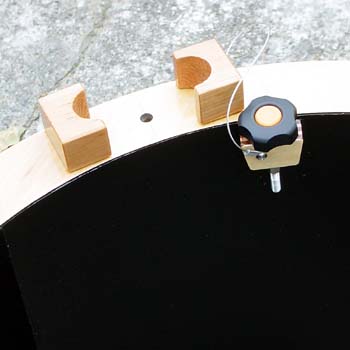 |
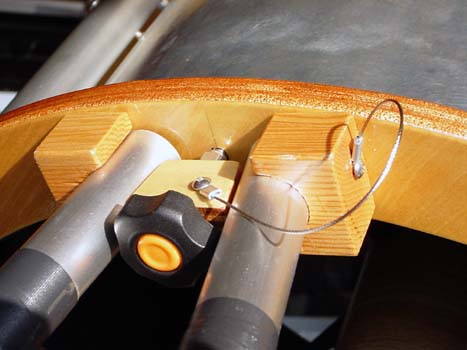 |
 |
|---|
Center: The wedge is screwed between a pair of poles.
Right: Inside view of the pole seats and wedge. Velcro is placed on the surface of the wedge and inside wall of the secondary cage.
Top of this page
Takedown & loading
 |
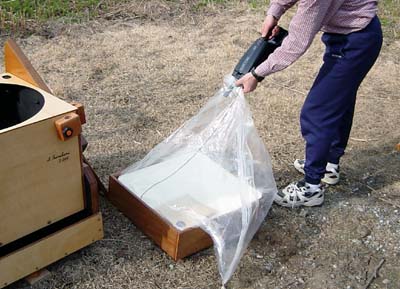 |
Storing a primary mirror into a wood case in which a zipped plastic bag is placed. Inside the walls and at the bottom of the wood case styrene foam plates 2 cm thick are fixed for cushions. A center mark is on the primary mirror for collimation.
Right: Vacuuming the plastic bag.
The primary mirror is covered with a thin plastic plate. You see the paper envelope on it with a circular window. Silica gel is in the envelope, and you can check its color through the window. The zippered plastic bag is closed except the last 5 cm, and from the opening the air is vacuumed by a hand cleaner.
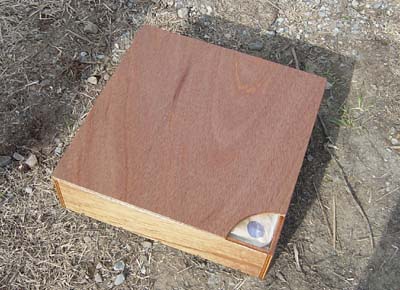 |
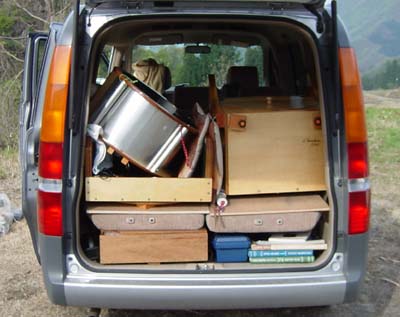 |
Right: Entire telescope has been loaded.
The primary mirror case is on the left floor.
Left: All the components are covered with insulation
sheets in summer
Right: My vehicle has eight seats: Honda Step wagon. Even though the telescope occupies rear seats, you can go star watching with four persons in addition to a driver.
The primary mirror case is on the left floor.
 |
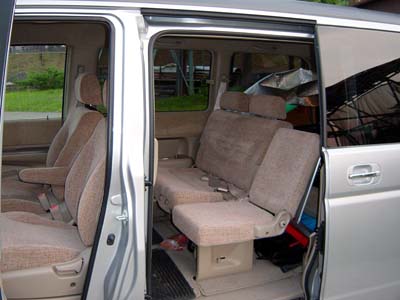 |
Right: My vehicle has eight seats: Honda Step wagon. Even though the telescope occupies rear seats, you can go star watching with four persons in addition to a driver.
